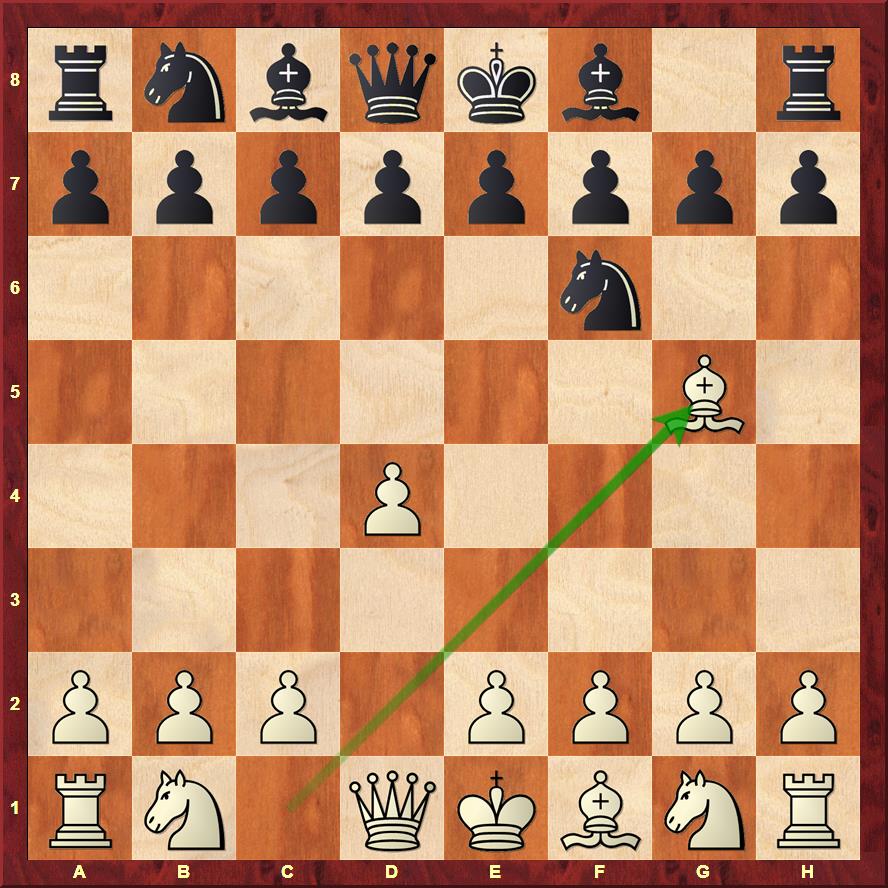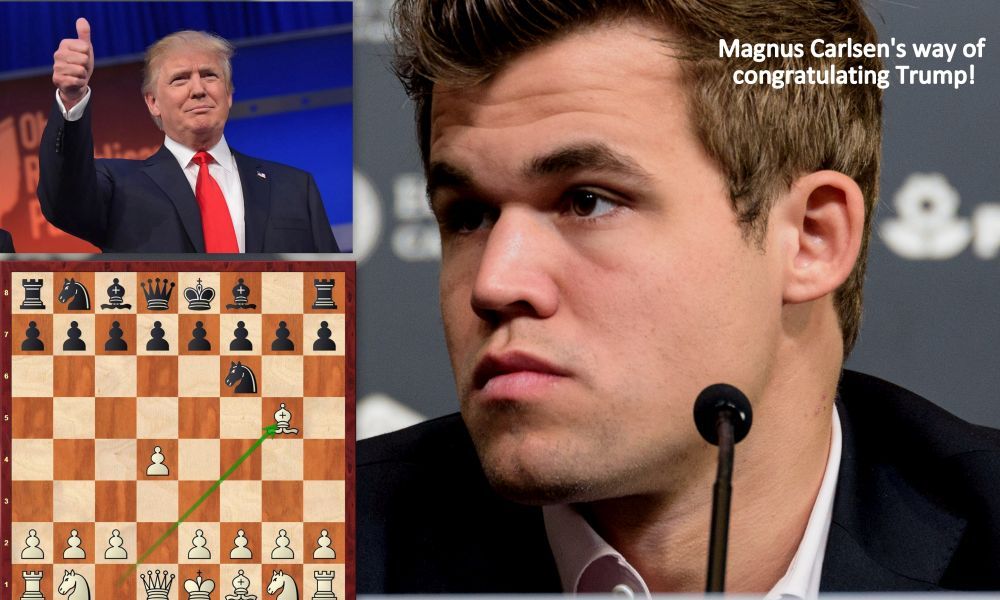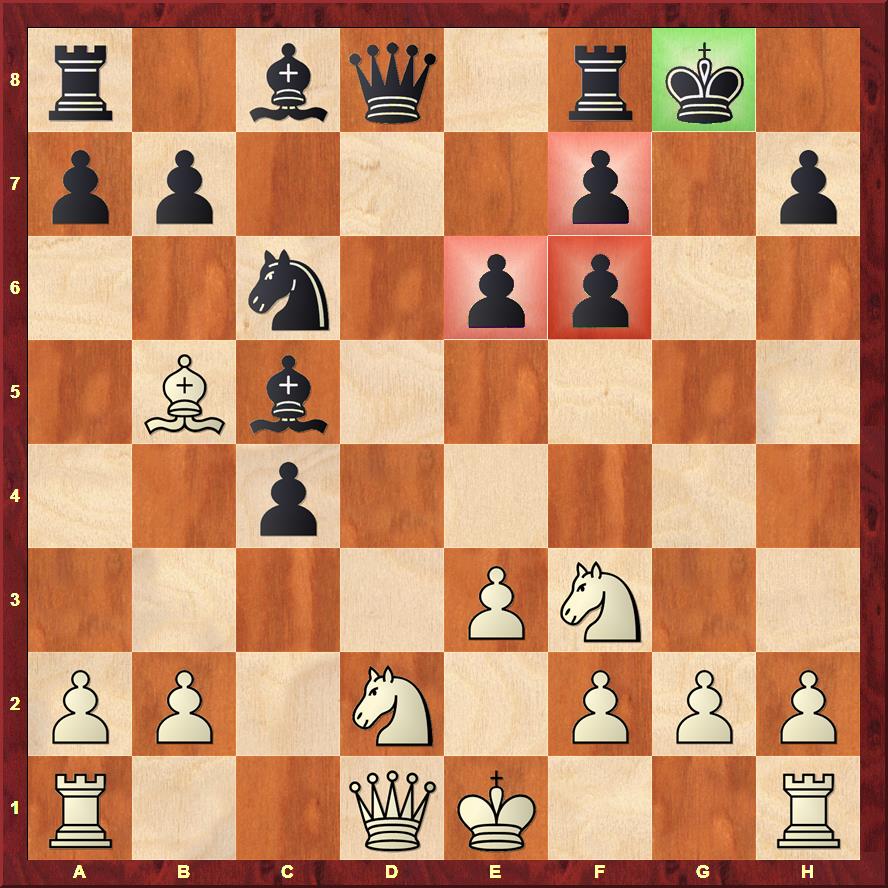Carlsen's benign Trumpowsky!
Magnus Carlsen played the Trompowsky (1.d4 Nf6 2.Bg5) in the first round of the World Championship 2016 against Magnus Carlsen. Many experts felt that there was definitely some connection between Carlsen's choice of the opening and the newly elected US President. While the first few moves were fun, the excitement didn't last long. With meticulous precision Sergey Karjakin equalized the game and gave his opponent no chances. After one round the score stands at 0.5-0.5. Full analysis of the game and don't miss Ribli's gem!



Co-incidence? I do not think so! The victory of Donald Trump must have surely motivated Magnus to try out the bishop sortie. Magnus has played the Tromp even in serious games in the past, so it didn't come as a huge surprise to Sergey. Karjakin was well prepared and he neturalized all of White's pressure to perfection. Never in the game did we feel as if the World Champion was pressing.
Key moments from the game

Many of us have prejudices that we shouldn't park our king behind a shattered pawn structure. However, top players have no such prejudices. Sergey noticed that Magnus has absolutely no way to reach his king, and boldly went ahead and castled.

Another interesting decision from the Challenger was the move ...Bd7. For the broken pawn structure, Black has the compensation in the form of the bishop pair. In such a scenario one would not like to part away, or exchange one of the bishops. But once again Sergey remains flexible and understands that it is more important to develop and get the rook into the game. Hence, this was a great decision by Karjakin.

After some exchanges we reached this endgame position which is often known as the Andersson endgame. These are contrary to Fischer endgames. Ulf Andersson loved to play with the knights, while Bobby Fischer craved for bishops. In the above position, it seems like Andersson would be smiling. But that is not the case, mainly because, there are two open files - 'c' and the 'd' files. Black can exchange a pair of rooks and then park his rook on the other file. If we imagine a position where the knight is on d3 with the pawn on e2 and blocking the d-file, then White would be better here. Here's a gem by Zoltan Ribli who beat none other than the great Anatoly Karpov, when the latter was on the heights of his power. If you look at the game closely you will realize that the thing that led to Karpov's downfall were the pawns being on a6 and b5. Sergey had his pawns on a7, b7 and they were not so easy to attack.
[Site "Amsterdam"]
[Date "1980.??.??"]
[Round "?"]
[White "Ribli, Zoltan"]
[Black "Karpov, Anatoly"]
[Result "1-0"]
[ECO "E05"]
[WhiteElo "2610"]
[BlackElo "2725"]
[PlyCount "109"]
[EventDate "1980.06.??"]
[EventType "tourn"]
[EventRounds "14"]
[EventCountry "NED"]
[EventCategory "14"]
[SourceTitle "MCL"]
[Source "ChessBase"]
[SourceDate "1999.07.01"]
b5 9. Qc2 Bb7 10. Bf4 Nd5 11. Nc3 Nxf4 12. gxf4 Nd7 13. Rfd1 Qc8 14. Ne4 c5 15.
dxc5 Nxc5 16. Nxc5 Qxc5 17. Qxc5 Bxc5 18. Rac1 Rfc8 19. Ne5 Bxg2 20. Kxg2 f6
21. Nf3 Bf8 22. e3 g6 23. b3 Bb4 24. h3 Kf8 25. Nd4 Kf7 26. a4 bxa4 27. bxa4
Bc5 28. Rc4 Ba3 29. Rxc8 Rxc8 30. Rb1 Rc4 31. Rb7+ Be7 32. Ra7 e5 33. fxe5 fxe5
34. Nf3 Rxa4 35. Nxe5+ Kf6 36. Nc6 Bc5 37. Rxh7 Ra2 38. Kf3 a5 39. h4 a4 40.
Ke4 Bf8 41. Ra7 Bd6 42. f4 Rh2 43. Ra6 Kf7 44. Ne5+ Bxe5 45. Kxe5 Kg7 46. Ra7+
Kh6 47. Rxa4 Rxh4 48. Kf6 Rh5 49. e4 Rh4 50. e5 Rh5 51. e6 Rf5+ 52. Ke7 Kg7 53.
Kd6 Rf8 54. Ra7+ Kf6 55. Rd7 1-0
Game analysis of Carlsen vs Karjakin, Game one
[Site "?"]
[Date "2016.11.11"]
[Round "1"]
[White "Carlsen, Magnus"]
[Black "Karjakin, Sergey"]
[Result "1/2-1/2"]
[ECO "D00"]
[WhiteElo "2857"]
[BlackElo "2772"]
[Annotator "Sagar Shah"]
[PlyCount "84"]
[EventDate "2016.11.12"]
[SourceDate "2016.11.12"]
with off beat systems like 1.e3 or 1.b3.} Nf6 {[%emt 0:00:10]} 2. Bg5 $5 {
[%emt 0:00:00][%cal Gc1g5] The Trompowsky! Wow! When was the last time we saw
this opening being used at the highest level? Wasn't it played by Anand when
he had to equalize the score against Anatoly Karpov in 1998? Many people have
started commenting that after Trump, its now time for the Tromp!} d5 {[%emt 0:
00:13] Karjakin plays in the most solid and classical fashion.} 3. e3 {[%emt 0:
00:00]} c5 {[%emt 0:00:39]} 4. Bxf6 {[%emt 0:00:29]} gxf6 $5 {[%emt 0:00:07]
Once Black has played c5, it makes sense to take back with the g-pawn.
Karjakin has played the opening in quite an ambitious fashion.} 5. dxc5 {
[%emt 0:00:12] Carlsen had already tried this against Kramnik in Tal Memorial
2013, so this could not come as a surprise for Team Karjakin.} Nc6 {[%emt 0:00:
48] This was played by Giri against Caruana when the latter replied with c3.
Carlsen has different ideas.} (5... e6 6. Nf3 Nd7 7. c4 dxc4 8. c6 Nb6 9. Nbd2
c3 10. bxc3 bxc6 11. Qc2 Bg7 12. Bd3 f5 13. e4 Qf6 14. Rc1 O-O 15. O-O c5 16.
Rfe1 $11 {1-0 (72) Carlsen,M (2864)-Kramnik,V (2803) Moscow 2013}) 6. Bb5 {
[%emt 0:00:32] This is a new position with only one game played with the move
Bb5 which was between Ziaur Rahman and Mas Hafizuelmi. Here Karjakin sank into
some thought and after nearly 20 minutes replied..} e6 {[%emt 0:19:58]} 7. c4 {
[%emt 0:01:50] Magnus Carlsen keeps playing quickly.} dxc4 {[%emt 0:01:10]} 8.
Nd2 $5 {[%emt 0:00:25] Objectively this should be no advantage for White, but
the position is a fresh one and Karjakin is out of his prep. Just what the
doctor ordered for Magnus!} Bxc5 {[%emt 0:04:26]} 9. Ngf3 {[%emt 0:01:20]} O-O
$5 {[%emt 0:02:13][%csl Re6,Rf6,Rf7,Gg8][%cal Ge8g8] Although the pawns on the
kingside are doubled on the f-file, there is absolutely no way to reach the
black king and he is quite safe on g8.} 10. O-O {[%emt 0:00:57]} Na5 {[%emt 0:
02:52]} (10... c3 {giving back the pawn and ruining White's structure also
looks like a logical move.} 11. bxc3 Bd7 12. Nd4 {And the queen coming out to
g4, there could be some complications, but Black can go} Nxd4 $1 13. Bxd7 Nc2
14. Qxc2 Qxd7 $11 {with equality.}) 11. Rc1 {[%emt 0:02:20]} (11. Nxc4 Qxd1 12.
Rfxd1 Nxc4 (12... a6 $5 13. Nxa5 axb5 $15) 13. Bxc4 b6 $11 {Once the queens
are exchanged, there are absolutely no dangers for Black.}) 11... Be7 {[%emt 0:
04:25] The bishop was not so well placed on c5 in any case, so dropping it
back to e7 is logical.} (11... a6 12. Bxc4 Nxc4 13. Nxc4 Qxd1 14. Rfxd1 $14 {
White's lead in development gives him a tangible edge.}) 12. Qc2 {[%emt 0:15:
15] Magnus tries to ensure that the queens are not exchanged when he takes the
pawn on c4.} Bd7 {[%emt 0:01:56][%cal Gc8d7] A surprising decision. Usually
the player with the bishop pair tries to keep his bishops on the board. But
here Karjakin tries to exchange one on his own. Well, he would like to develop
quickly, bring his rook to c8, and hence in that respect this is a good
decision.} (12... a6 13. Bxc4 Nxc4 14. Nxc4 b5 15. Rfd1 Qc7 16. Qe4 Bb7 17.
Qg4+ Kh8 18. Nd6 $14) 13. Bxd7 {[%emt 0:03:05]} Qxd7 {[%emt 0:00:03]} 14. Qc3 {
[%emt 0:02:44]} (14. Nxc4 Rac8 $11) 14... Qd5 {[%emt 0:07:44]} (14... b6 {
was also fine.} 15. Ne4 e5 16. Rfd1 Qe6 $11) 15. Nxc4 {[%emt 0:06:38]} Nxc4 {
[%emt 0:00:15]} 16. Qxc4 {[%emt 0:00:10]} Qxc4 {[%emt 0:00:07]} 17. Rxc4 {
[%emt 0:00:04] When this position was reached, there was confusion amongst the
online viewing spectators. What should be the evaluation of the position? In
general this is just an equal position. There is not much to think about it.
Black's pawn structure is a bit compromised, but it is not so easy to take
advantage of it. Meanwhile the bishop is a good piece when you have pawns on
both the sides of the board. But when it comes to Magnus Carlsen you can never
be sure. This guy has the ability to squeeze water from stone. Hence, the
confusion - position is equal, but will Magnus squeeze something out of it? By
the way there are similar Catalan endgames which are better for White, but
there are two differences, the pawn is usually on e2 and the knight is on d3.
White controls the c-file and Black has no counterplay on the d-line. This is
a pretty dangerous scenario. In the game things are more easy for Black.} Rfc8
{[%emt 0:03:04]} 18. Rfc1 {[%emt 0:00:04]} Rxc4 {[%emt 0:00:06]} 19. Rxc4 {
[%emt 0:00:06]} Rd8 {[%emt 0:01:53] Karjakin plays simple and natural
developing moves.} 20. g3 {[%emt 0:05:58]} Rd7 {[%emt 0:02:59] Stopping the
seventh rank penetration.} 21. Kf1 {[%emt 0:00:36]} f5 {[%emt 0:02:10]} 22. Ke2
{[%emt 0:00:37]} Bf6 {[%emt 0:00:13]} 23. b3 {[%emt 0:00:23]} Kf8 {[%emt 0:03:
29] The rook defends, the seventh rank, the bishop is well placed on f6 and
the king now decides to come in the game.} 24. h3 $1 {[%emt 0:06:38] g4 is on
the cards. This will force, fg4 hg4 and then the h7 pawn would be quite weak.}
h6 {[%emt 0:08:06]} 25. Ne1 {[%emt 0:09:35]} Ke7 {[%emt 0:05:16]} 26. Nd3 {
[%emt 0:05:34] I like the way Carlsen is moving around. It gives a feeling
that he is improving the position. But truth be told, he doesn't really have a
good plan to breakthrough and is waiting for Sergey to do something stupid.}
Kd8 {[%emt 0:04:39]} 27. f4 {[%emt 0:02:47] Magnus chages his plans. Instead
of g4, he plays first f4. Now he can threaten to go g4 or e4 depending on the
requirement of the position.} (27. g4 fxg4 28. hxg4 Rc7 $1 29. Rxc7 Kxc7 30. f4
Kd6 $11 {The position is just equal.}) 27... h5 $6 {[%emt 0:08:30] The reason
this move is dubious is because the pawn endings might be completely lost for
Black. Read on further to know why.} (27... Rc7 $5 28. Rxc7 Kxc7 29. Ne5 Bxe5
30. fxe5 Kc6 31. Kf3 Kd5 32. Kf4 $11 {White has no win here. But now imagine
that the pawn was on h5 instead of h6 and you realize that this endgame is
just lost for Black.}) 28. a4 {[%emt 0:13:52]} Rd5 {[%emt 0:07:58]} (28... Rc7
{Exchanging the rook seems like an easy solution, but after} 29. Rxc7 Kxc7 30.
Ne5 $1 Bxe5 31. fxe5 {This pawn ending is just lost for Black.} Kc6 32. Kf3 Kd5
33. Kf4 $18 {The h-pawn is lost and and white queens first.}) 29. Nc5 {[%emt 0:
07:50]} b6 {[%emt 0:00:13]} 30. Na6 {[%emt 0:02:49]} Be7 {[%emt 0:02:54]} 31.
Nb8 {[%emt 0:03:34] The knight is dancing around, but it is not so easy to do
some damage.} (31. Rc7 Rd7 $11) 31... a5 {[%emt 0:00:20]} 32. Nc6+ {[%emt 0:03:
25]} Ke8 {[%emt 0:00:13]} 33. Ne5 {[%emt 0:04:26]} (33. Nxe7 Kxe7 34. Rc6 Rd6
$11) 33... Bc5 {[%emt 0:00:33]} 34. Rc3 {[%emt 0:04:41]} Ke7 {[%emt 0:03:01]}
35. Rd3 {[%emt 0:00:28]} Rxd3 {[%emt 0:00:09]} 36. Kxd3 {[%emt 0:00:12]} f6 {
[%emt 0:00:13]} 37. Nc6+ {[%emt 0:04:10]} Kd6 {[%emt 0:00:17]} 38. Nd4 {
[%emt 0:00:08]} Kd5 {[%emt 0:00:56] There is no way for White to break in and
the same goes for Black.} 39. Nb5 {[%emt 0:00:27]} Kc6 {[%emt 0:03:17]} 40.
Nd4+ {[%emt 0:00:00]} Kd6 {[%emt 0:01:42]} 41. Nb5+ {[%emt 0:08:05]} Kd7 {
[%emt 0:00:20]} 42. Nd4 {[%emt 0:00:38]} Kd6 {[%emt 0:00:04] A very successful
first World Championship game for Sergey Karjakin. Magnus could not outplay
him in a fresh position. The Russian was upto task on every problem that he
was posed and made the draw with ease. It will be interesting to see game two
where Karjakin will have the white pieces.} 1/2-1/2


Interesting Tweets
#CarlsenKarjakin are grt, but this is the first world championship @vishy64theking is not battling since 2007 - 9 Years! #IMissMyVishy
— Venkat Saravanan (@reachvsara) November 12, 2016
"So the opening had nothing to do with Donald Trump?
— Tarjei J. Svensen (@TarjeiJS) November 11, 2016
Carlsen: "A little bit!"#CarlsenKarjakin
Woody Harrelson giving Sergey Karjakin the #TrueDetective look. #CarlsenKarjakin pic.twitter.com/wK2bfIROzl
— Olimpiu G. Urcan (@OlimpiuUrcan) November 11, 2016
#CarlsenKarjakin the World Champion is trying the technique of what Spassky refers to as squeezing one testicle at a time.
— Nigel Short (@nigelshortchess) November 11, 2016
Have to say I've been really impressed with @GMJuditPolgar and the entire #worldchess2016 coverage so far...
— Daniel Rensch (@DanielRensch) November 11, 2016
Last night with Magnus Carlsen and Sergey Karjakin, on the eve of the World Chess Championship in NYC. #worldchess2016 pic.twitter.com/54eLl80Q52
— Adrian Grenier (@adriangrenier) November 11, 2016
Gd Luck @MagnusCarlsen at #worldchess2016 You made my son's day when he met you at @LibertySciCtr A big fan of you #CarlsenKarjakin #chess pic.twitter.com/BjW9RVPuJJ
— Rajiv Mundayat (@RajMundayat) November 11, 2016
We deeply apologize for the black out of online broadcast at the beginning of the match. Things are fixed and working now #worldchess2016
— World Chess (@theworldchess) November 11, 2016
